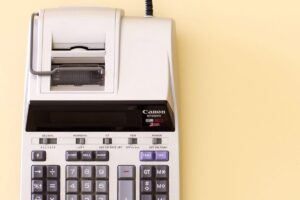Table of Contents

Overview
If you are retired or close to retirement and debt is keeping you up at night, you are not alone. Many Canadians ask whether creditors can touch their CPP, OAS, or savings. The short answer: your core government pensions are protected by law from most creditors, and a consumer proposal can provide structured relief from unsecured debt while keeping your retirement income intact.
Key takeaway: A consumer proposal stops most collection actions, consolidates what you owe into one affordable payment, and lets you keep receiving CPP and OAS as normal.
Understanding Pensions and Debt
Retirement income typically comes from a mix of:
- Government benefits: Canada Pension Plan (CPP) and Old Age Security (OAS)
- Employer pensions: Defined benefit (DB) or defined contribution (DC)
- Personal savings: RRSPs and RRIFs
Two legal principles matter most: (1) CPP and OAS are generally not assignable or seizable by private creditors; and (2) filing a consumer proposal creates a stay of proceedings that halts most collections on included debts.
Can Creditors Take Your Pension?
CPP and OAS
- Private creditors: Cannot garnish CPP or OAS at the source.
- CRA: Has special powers to redirect these benefits for tax or certain other government debts. An accepted consumer proposal can resolve the debt and stop this garnishment.
After deposit: Once CPP/OAS funds are in your bank account, they may be exposed to a bank account garnishment or "right of set-off" if you owe that same bank. A consumer proposal stops these actions going forward.
Employer Pensions
Locked-in pensions are generally non-assignable and restricted by pension standards rules, which helps shield them from ordinary creditors. Exact protections depend on plan terms and governing legislation.
RRSPs and RRIFs
RRSPs and RRIFs are generally exempt in insolvency, except for contributions made within the 12 months before filing. See our guide on what happens to RRSPs and pensions or the OSB's guidance on consumer proposals for details.
Why a Consumer Proposal Works for Retirees
- Stops collections and most garnishments: The stay of proceedings applies as soon as you file.
- Protects income stability: You keep receiving CPP/OAS and pension income while making an affordable, interest-free payment.
- Keeps assets: You typically retain your home, vehicle, and registered retirement savings (subject to normal exemption rules and the 12-month RRSP contribution exception).
- Predictable on a fixed income: Payments can run up to five years, with no penalty to pay off early.
- Helps with CRA pressure: An accepted proposal can resolve tax debt and stop ongoing CRA garnishments on included debts.
How It Works
- Confidential review with a Licensed Insolvency Trustee (LIT): Your income (CPP/OAS, pensions), expenses, and debts are reviewed. Speak with an LIT.
- Right-sized offer: Your LIT proposes a single monthly payment you can afford; interest freezes once accepted.
- Legal filing and protection: The stay of proceedings begins immediately upon filing.
- Creditor vote: Creditors have up to 45 days to accept. If a majority by dollar value agrees—or if no one objects—the proposal is approved. See BIA s.66.22.
- Carry on with pension income: You make the agreed payment; CPP/OAS continue as normal. You also complete two brief financial counselling sessions.
- Completion: After your last payment, you receive a Certificate of Full Performance, releasing you from included debts.
Real-World Scenarios
Scenario 1: CRA Tax Debt and CPP Garnishment
Situation: CRA notifies you they will deduct from your CPP for unpaid tax debt.
How a proposal helps: Filing applies a stay of proceedings, freezing interest and stopping ongoing CRA garnishment on included debts once accepted. You repay a portion through one affordable plan.
Scenario 2: Creditors Threatening Bank Account Garnishment
Situation: Your CPP/OAS deposit lands in an account at a bank you also owe for a credit card. The bank threatens to take the money.
How a proposal helps: Filing stops this "right of set-off" on unsecured debts. Your LIT may suggest switching to a neutral bank before filing to ensure uninterrupted access to your pension funds.
Scenario 3: High Credit Card Debt on a Fixed Income
Situation: Minimum payments on credit card debt are overwhelming your fixed income, and interest keeps growing.
How a proposal helps: Debts are consolidated into one interest-free payment, often reducing the total you owe while protecting your pension and registered savings.
CPP, OAS, and RRSP Protections Explained
- CPP and OAS: Generally not assignable or subject to attachment/seizure by private creditors. CRA can garnish for certain government debts; accepted proposals can resolve the debt and stop ongoing action. See CPP Act s.65, OAS Act s.36, and CRA garnishment guidance.
- Employer pensions: Typically locked-in and protected by provincial or federal pension standards legislation.
- RRSP/RRIF: Exempt from seizure in insolvency except for contributions made within 12 months before filing. See what happens to RRSPs in insolvency and the OSB consumer proposal overview.
- Transfers vs. withdrawals: Registered-to-registered transfers maintain protection; withdrawals may lose it and can become accessible to creditors.
Consumer Proposal vs. Bankruptcy for Retirees
| Feature | Consumer Proposal | Bankruptcy |
|---|---|---|
| Debt forgiveness | Partial repayment of a reduced balance | Full discharge after required period |
| Pension protection | CPP, OAS, and employer pensions continue | Protected, but surplus income rules may apply |
| RRSP treatment | Protected, except last 12 months’ contributions | Same 12-month contribution rule |
| Credit rating | R7 (less severe) | R9 (most severe) |
| Payments | Fixed, interest-free (up to 5 years) | Based on income; surplus payments possible |
| Assets | Typically retained | Some non-exempt assets may be surrendered |
| Duration | 1–5 years; can pay early | ~9–21 months (first-time) |
Why retirees often prefer a proposal: You keep control, avoid stigma, and follow a predictable plan without interest. Learn more about bankruptcy vs. consumer proposal.
When to Talk to a Licensed Insolvency Trustee
- You are using credit to cover essentials like groceries or medication.
- Collectors have started calling or writing.
- You received notice of a wage or pension garnishment.
- You owe back taxes and fear a CRA deduction from CPP or OAS.
- You are considering cashing RRSPs to pay unsecured debt.
A consultation with a Licensed Insolvency Trustee is free, confidential, and judgment-free. You will leave with clear next steps, whether or not a consumer proposal is right for you. Contact Doyle Salewski.
Step-by-Step Filing Checklist
- Book a free consultation with a Licensed Insolvency Trustee.
- Gather income details (CPP, OAS, pensions, RRIF), debts, and essential expenses.
- Work with your LIT to set an affordable monthly offer.
- File the proposal; the stay of proceedings begins immediately.
- Creditors vote within roughly 45 days; if accepted, payments begin.
- Attend two brief financial counselling sessions.
- Complete payments and receive a Certificate of Full Performance.
Frequently Asked Questions
Will filing a consumer proposal affect my CPP or OAS income?
No. You will continue to receive these benefits as usual. They are protected by federal law and are not part of the assets reviewed in your proposal.
Can a consumer proposal stop CRA from taking my pension for tax debt?
Yes, in most cases. Once the proposal is filed and accepted, CRA collection actions on included debts, including garnishments, must stop.
I am retired and my income is only CPP and OAS. Can I still file?
Yes. Your trustee will tailor payments to your budget. Some retirees choose a small monthly amount; others use a one-time lump sum from family or savings.
What happens to my spouse’s pension or income if I file?
Your spouse’s income is not included unless they are a co-signer or joint borrower. Your LIT can advise on keeping finances separate.
How long will a consumer proposal stay on my credit report?
A consumer proposal is reported as R7 for three years after completion, or six years from filing, whichever comes first. Learn more about your credit report, Equifax guidance, and the FCAC.
Will I lose my RRSPs or RRIFs?
No. These accounts are generally exempt, except for RRSP contributions made within the 12 months before filing.
What is the main difference between a consumer proposal and bankruptcy for retirees?
Both offer legal debt relief. A consumer proposal lets you keep assets and maintain more control; bankruptcy is faster but may involve surplus income payments and stricter duties. See our full comparison.
Get Help Today
At Doyle Salewski, our Licensed Insolvency Trustees help Canadians in Ontario and Quebec resolve debt while protecting pension income. Whether you face tax debt, credit cards, or collection calls, we will help you choose the right path—without risking your CPP, OAS, or retirement savings.
Book your free, confidential consultation to start your path toward financial peace of mind. Explore our Debt Help for Seniors resources.
Sources
Last verified October 23, 2025
- Office of the Superintendent of Bankruptcy — Consumer proposals
- OSB — Creditors contacting you after you file
- Bankruptcy and Insolvency Act s.66.22 — Deemed court approval
- Bankruptcy and Insolvency Act s.66.31 — Defaults/annulment
- Bankruptcy and Insolvency Act s.66.37 — Amendments
- Bankruptcy and Insolvency Act s.178 — Debts not released (e.g., student loans)
- Canada Pension Plan Act s.65 — Non-assignability
- Old Age Security Act s.36 — Non-assignability
- Canada Revenue Agency — Garnishing your income or assets
- Equifax — How long information stays on your credit report
- Financial Consumer Agency of Canada — Information on your credit report
Disclaimer: This article provides general information about consumer proposals in Ontario and Quebec and is not legal, accounting, or financial advice. For personal guidance, speak with a Licensed Insolvency Trustee at Doyle Salewski.





